Curiosities about flowers - Discover the fascinating world of plants
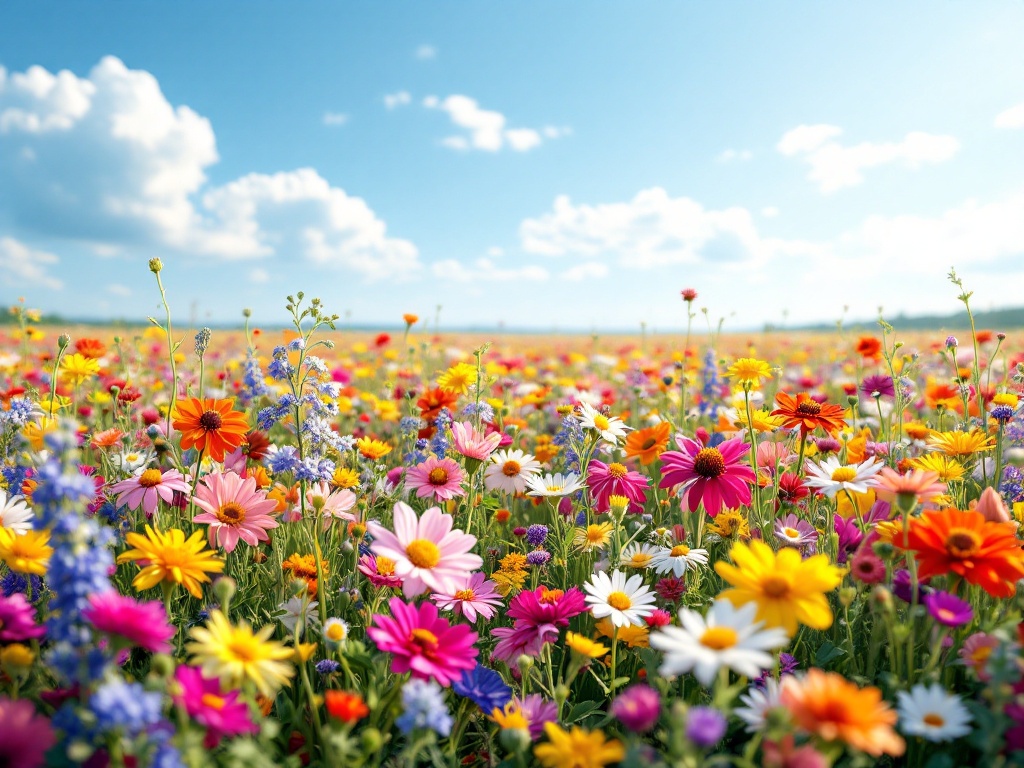
Have you ever wondered what secrets the flowers that delight our eyes every day hide? These wonderful creations of nature have played an essential role in people's lives throughout history, being present in mythology, art, medicine and in important moments of our lives. Let's step together into the fascinating world of flowers and discover some amazing curiosities!
Introduction to the world of flowers - why are plants and flowers interesting?
Scientifically, flowers appeared about 140 million years ago, during the Cretaceous period. Since then, they have diversified into an impressive variety of shapes, colors, and sizes. Today, there are over 250,000 species of flowering plants, each with unique characteristics waiting to be discovered.
Beyond their aesthetic appeal, flowers are crucial to natural ecosystems. They are responsible for plant reproduction and play a vital role in pollination, ensuring the survival of many species of insects and other animals. Without flowers, our world would certainly be much poorer and less colorful.
One fascinating aspect is the ability of flowers to influence people's moods. Studies show that the presence of flowers can reduce stress, improve emotional state and even speed up the recovery process of patients in hospitals. The next time you feel tired or stressed, try spending a few moments in a blooming garden or bringing a bouquet of flowers into your home - you might be surprised by the positive effect they have on you!
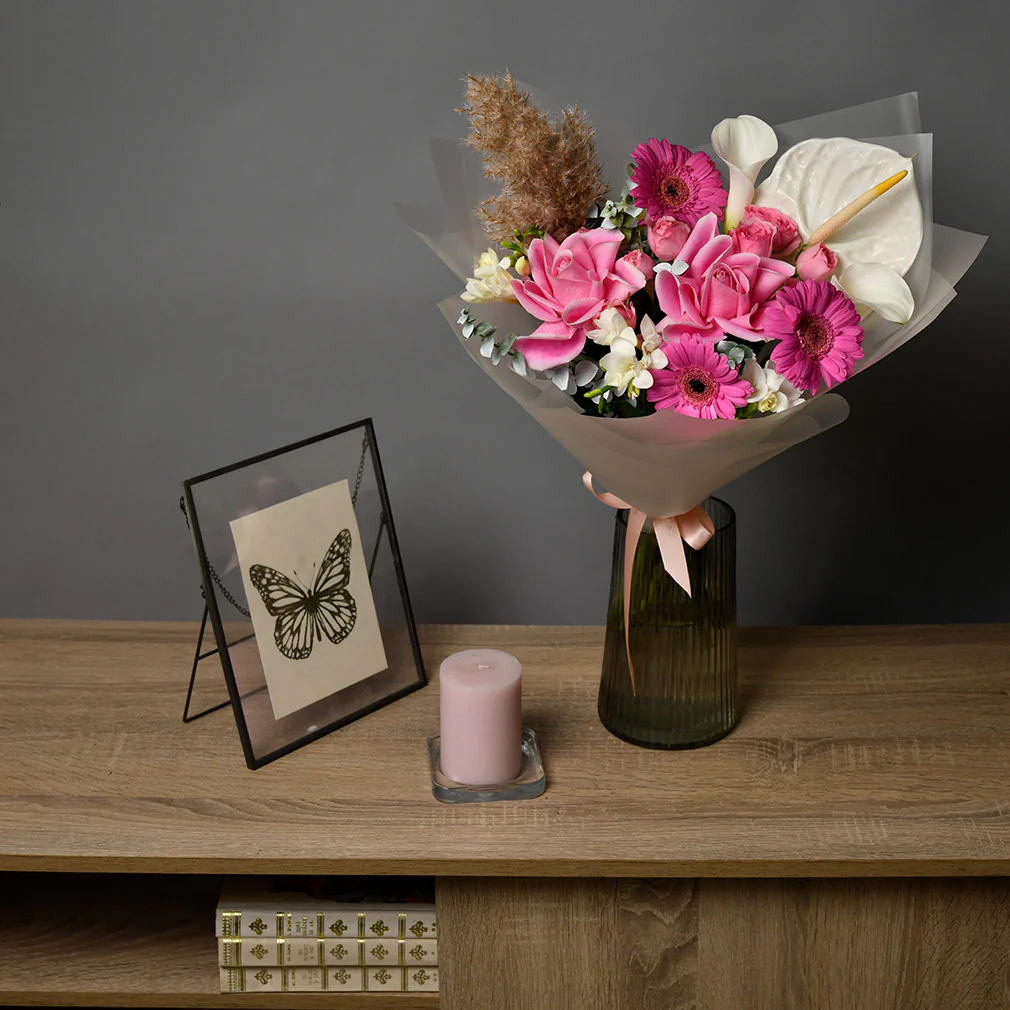
Photo source: Californiaflowers.ro
In human culture, the meanings of flowers are more than just symbolic. They are used to express emotions, mark important events, and convey subtle messages. For example, red roses symbolize passionate love, while white lilies are associated with purity and innocence. Which flower do you think represents you best?
What is a plant and how does it work?
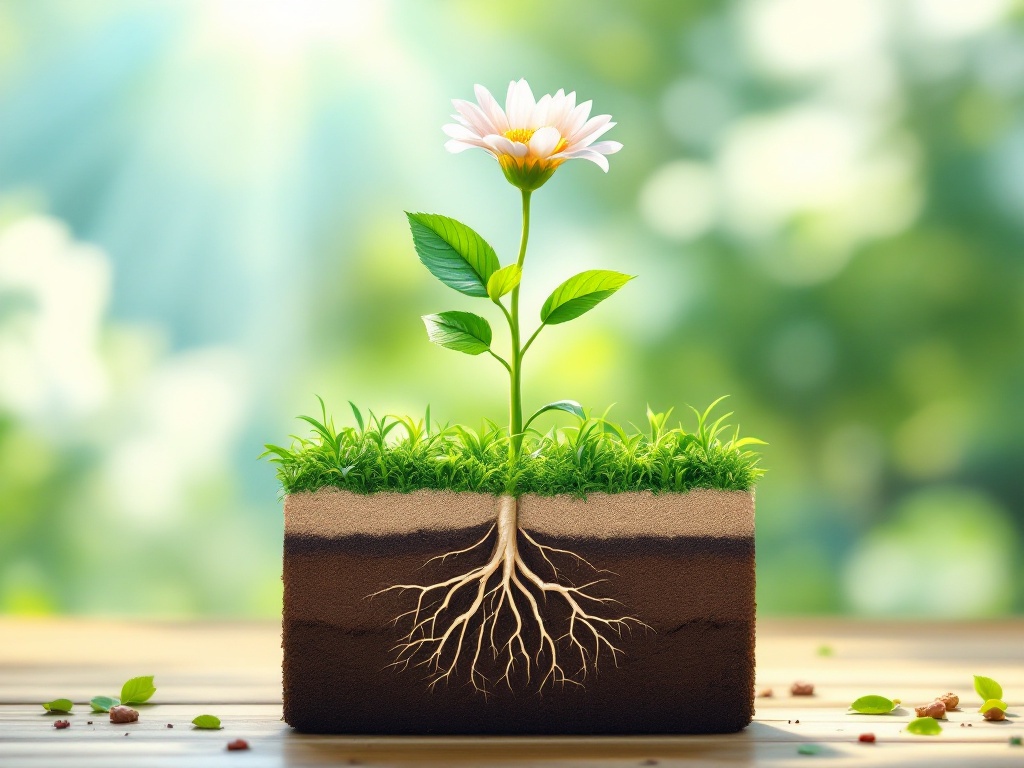
Before we explore the fascinating world of flowers further, let's better understand what a plant is and how it works. A plant is a complex living organism, capable of producing its own food through the process of photosynthesis. Plants are essential to life on Earth, providing oxygen and serving as the base of food chains in most ecosystems.
The basic structure of a plant includes the root, stem, leaves, and, in the case of flowering plants, the flower itself. The root anchors the plant in the soil and absorbs water and necessary nutrients. The stem supports the plant and transports substances between the root and the leaves. The leaves are the "factories" of the plant, the place where photosynthesis takes place. And the flower, of course, is the reproductive organ of flowering plants.
A crucial aspect of plant functioning is photosynthesis. This remarkable process allows plants to transform solar energy, carbon dioxide, and water into glucose and oxygen. Have you ever thought that the plants around you are real "factories" that produce food and oxygen for the entire planet?
One interesting fact about plants that might surprise you is their ability to communicate. Yes, you read that right! Studies show that plants can emit chemical signals to warn neighboring plants of dangers such as insect attacks or drought. It's as if they have their own "secret language"!
Plants are incredibly diverse, adapting to a wide range of environments. For example, cacti are perhaps the most popular sun-tolerant flowers , having developed specialized tissues for storing water, allowing them to survive in arid deserts. And some aquatic plants have leaves that float on the surface of the water to capture as much sunlight as possible.
Another fascinating aspect is the longevity of some plant species. Certain specimens of sequoia trees can live over 3,000 years, making them among the longest-lived organisms on the planet. Can you imagine sitting next to a tree that has witnessed so many historical events?
Interesting flowers and their unique characteristics
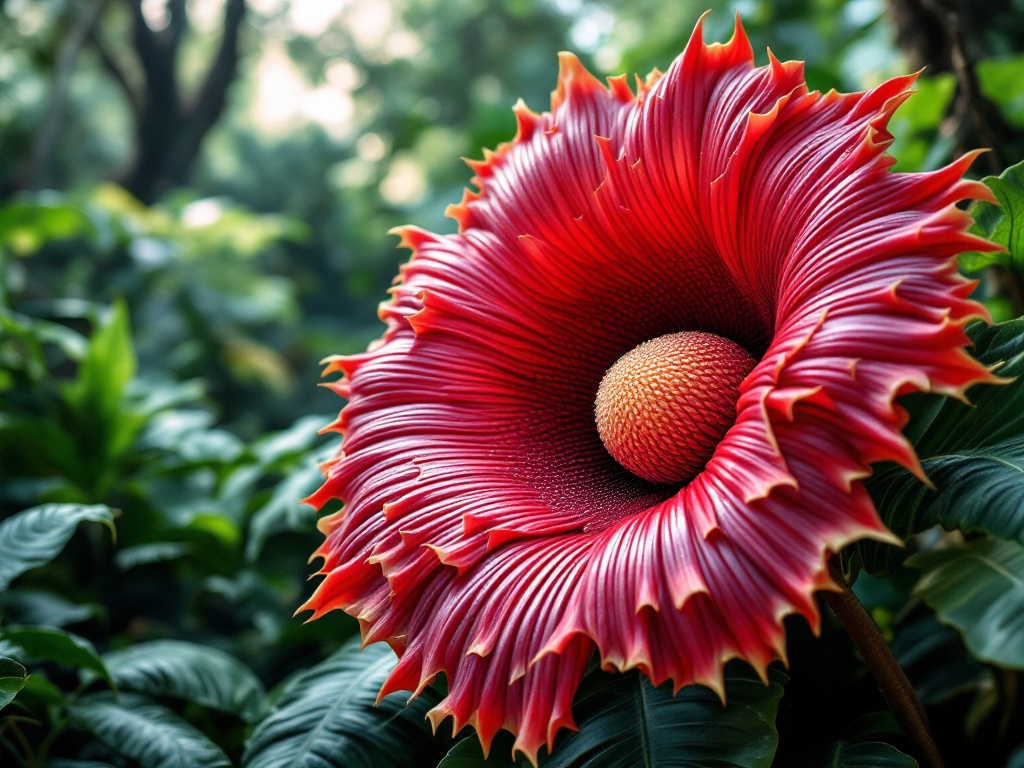
Now that you have a clearer idea of what plants are and how they work, let's explore together some of the most interesting flowers in the world and their unique characteristics that will surely amaze you!
Let's start with Rafflesia Arnoldii, also known as the "corpse flower". This giant flower can reach a diameter of over 90 cm and weigh up to 11 kg, making it the largest flower in the world. Native to the rainforests of Indonesia, Rafflesia Arnoldii has an interesting peculiarity: it emits a strong smell of rotting flesh to attract insects that pollinate it. You're probably wondering why a flower would do this? Well, in the plant world, adaptation is the key to survival!
Another interesting plant is Mimosa pudica, also known as the "shy plant". This flower has an amazing ability to close its leaves when touched. If you have the opportunity to see such a plant, try to touch it lightly and you will notice how the leaves quickly close up, as if trying to hide. It is a fascinating defense mechanism against predators!
If you are a fan of exotic flowers, then the Dracula orchid will surely delight you. Native to the tropical forests of South America, this orchid is notable for its monkey-like appearance. It has long, dark petals that resemble vampire fangs, hence its name, inspired by the legends of Dracula.
Another flower worth mentioning is Amorphophallus titanum, also known as the "titan flower". This plant can reach an impressive height of up to 3 meters, making it one of the largest inflorescences in the world. Like Rafflesia, it emits a strong smell of rotting flesh to attract pollinating insects. Wondering what it would be like to have such a plant in your garden?
We can't talk about interesting plants without mentioning Nepenthes, or the pitcher plant. This carnivorous plant develops pitcher-shaped traps filled with a digestive fluid. Insects and even small animals are attracted to the nectar produced by the plant, fall into the trap and are then digested. It is a fascinating example of how nature finds ingenious solutions for survival.
Finally, let's take a moment to consider the Passiflora, or passion flower. This exotic flower has a complex structure and a vibrant color that attracts the eye. Its elaborate corolla of filaments and tripartite stigma give it a unique appearance, making it one of the most appreciated ornamental flowers.
Surprising facts about flowers
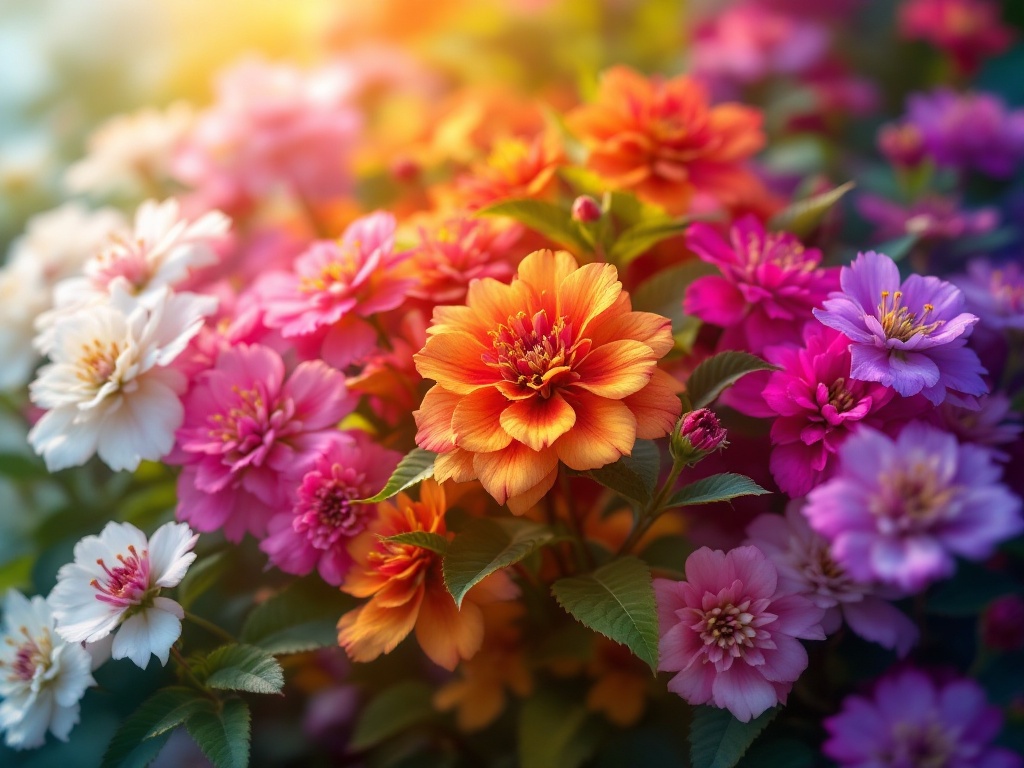
Now that we've introduced you to some of the most interesting flowers in the world, let's explore together some interesting facts about flowers that will definitely amaze you!
Did you know that there is a flower that changes its color several times during the day? It is the Lantana Camara, nicknamed the "chameleon flower". This fascinating plant goes through shades of white, pink, red and purple as the day progresses. Imagine what it would be like to have such a flower in your garden, offering you a different color show every hour!
If you are passionate about perfumes, you will be delighted to learn about the American cactus flower, considered the most fragrant flower known. Its scent spreads over a radius of over 1 km! Wondering what it would be like to smell this natural and intense perfume? Definitely wonderful!
Another curiosity about plants is related to the extreme size of some flowers. For example, the Rafflesia Arnoldii, which we mentioned earlier, is the largest flower in the world, reaching a diameter of over 90 cm and a weight of up to 11 kg. At the opposite end, one of the smallest flowers in the world belongs to the species Wolffia globosa, with a size of only 0.3 mm!
Speaking of extremes, did you know that there are plants that bloom extremely rarely? A fascinating example is the bamboo Phyllostachys bambusoides, which blooms once every 120 years! Imagine how special the opportunity to see such a flower is!
In the world of flowers, there are also impressive longevity records. In Germany, near the cathedral in Hildesheim, grows a rose bush that is over a thousand years old. This plant even survived the bombings of World War II, becoming a symbol of resilience and eternal beauty.
A curiosity about flowers that might surprise you is related to their lesser-known uses. For example, some flowers are edible and are used in gastronomy. Acacia flowers, violets or pumpkin flowers can be used in the preparation of jams or fried. The next time you cook, you may want to add a floral touch to your dishes!
In the medical field, flowers continue to amaze us. Snowdrops are the source of galantamine, a substance used to treat Alzheimer's disease. And angelica, a flower used in Europe for centuries, was considered a remedy for a variety of ailments, from the bubonic plague to indigestion.
The interesting role of flowers in the ecosystem and in human life
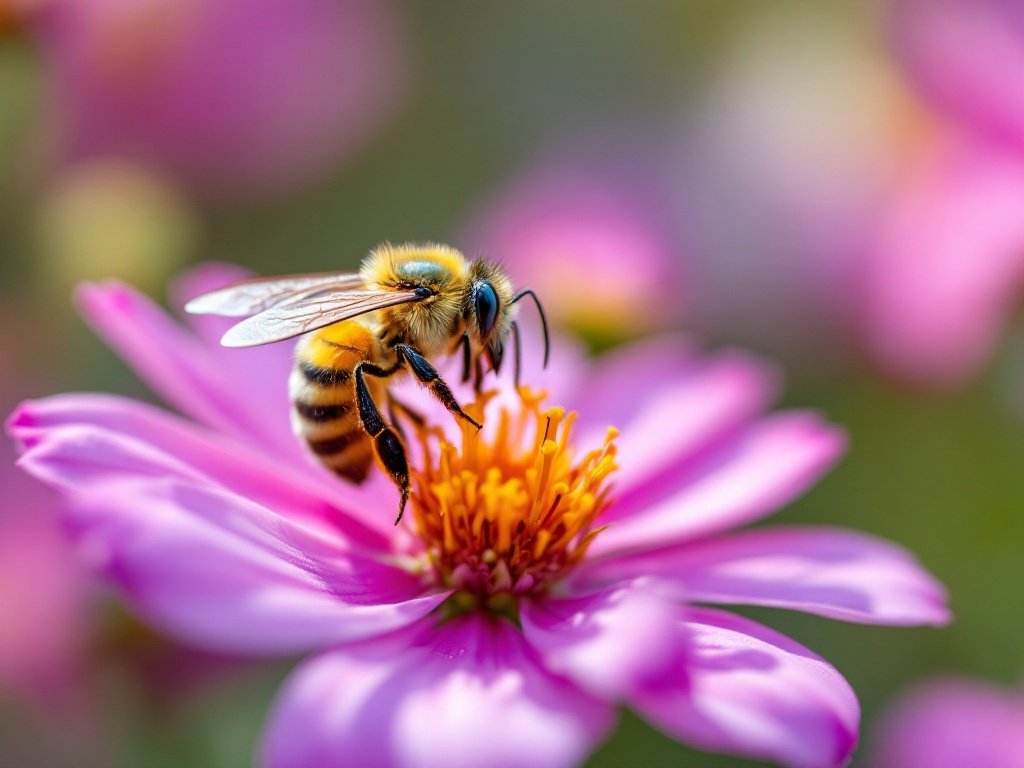
After discovering so many fascinating things about flowers, let's explore together the essential role they play both in natural ecosystems and in our daily lives.
In nature, flowering plants are the true heroes of biodiversity. They are responsible for the reproduction and perpetuation of plant species, playing a crucial role in maintaining ecological balance. Have you ever thought that without flowers, many of your favorite fruits and vegetables would not exist?
A key aspect of the role of flowers in the ecosystem is pollination. Through bright colors, diverse shapes, and attractive scents, flowers attract insects and other pollinating animals, thus facilitating the transfer of pollen and plant reproduction. The next time you see a bee or a butterfly flying from flower to flower, think about how you are witnessing one of the most important processes in nature!
Flowers are also a vital source of food for a variety of organisms. The nectar and pollen provided by flowers support entire populations of insects, birds, and small mammals. Thus, flowering plants are at the base of many food chains in ecosystems. Without them, many animal species would become extinct.
In human life, flowers have a profound meaning, going beyond their simple biological function. They have a scientifically proven therapeutic effect. Whether you prefer bouquets of roses , bouquets of tulips or other floral arrangements , a bouquet of flowers placed on your dining room table or desk will certainly have a beneficial effect on your well-being!
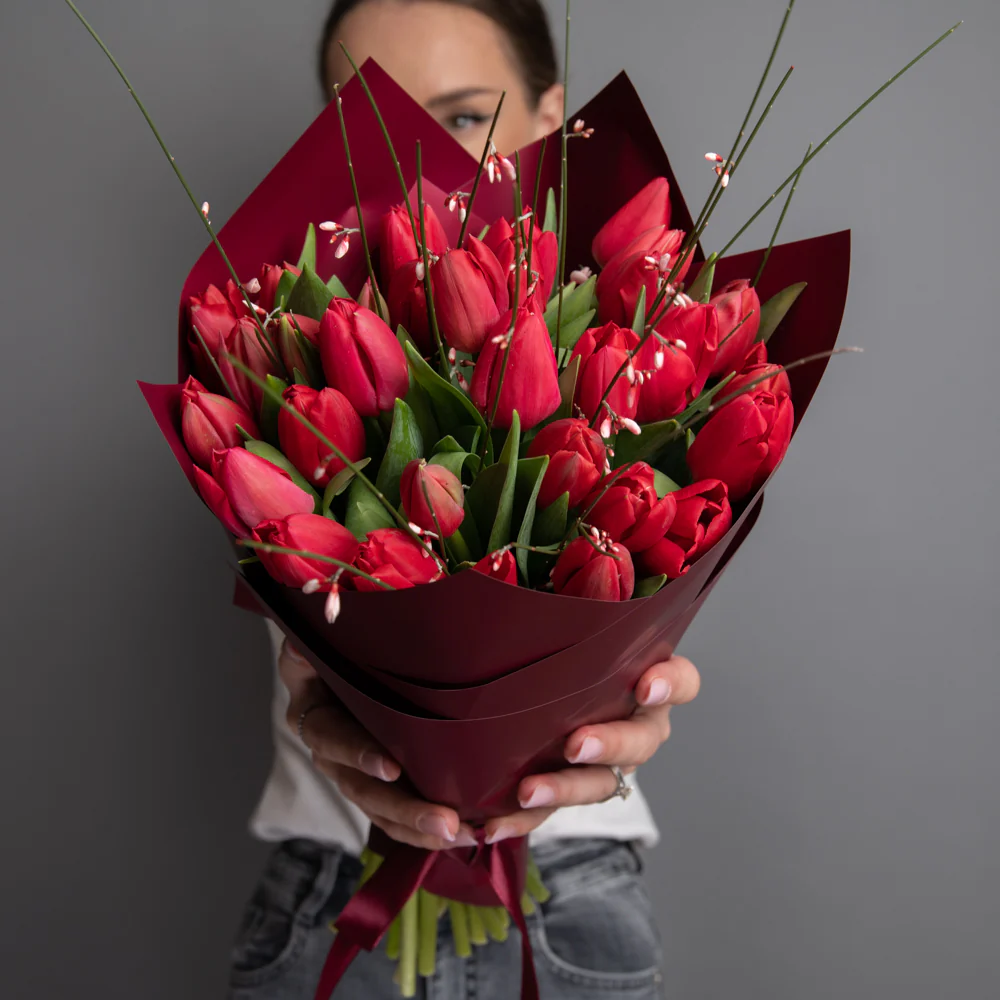
Photo source: Californiaflowers.ro
Culturally, flowers have taken on multiple symbolic meanings in various societies. They are used to express emotions, mark important events, and convey subtle messages. For example, in China, peonies are known as the "flower of wealth and honor," symbolizing prosperity and good fortune, and giving flowers according to the zodiac sign is a global practice!
Last but not least, flowers play an important economic role. The floral industry generates significant revenues globally, from flower cultivation to the trade in floral arrangements. Many flowering plants are also used in the food, cosmetic and pharmaceutical industries, demonstrating their versatility and importance in our daily lives.
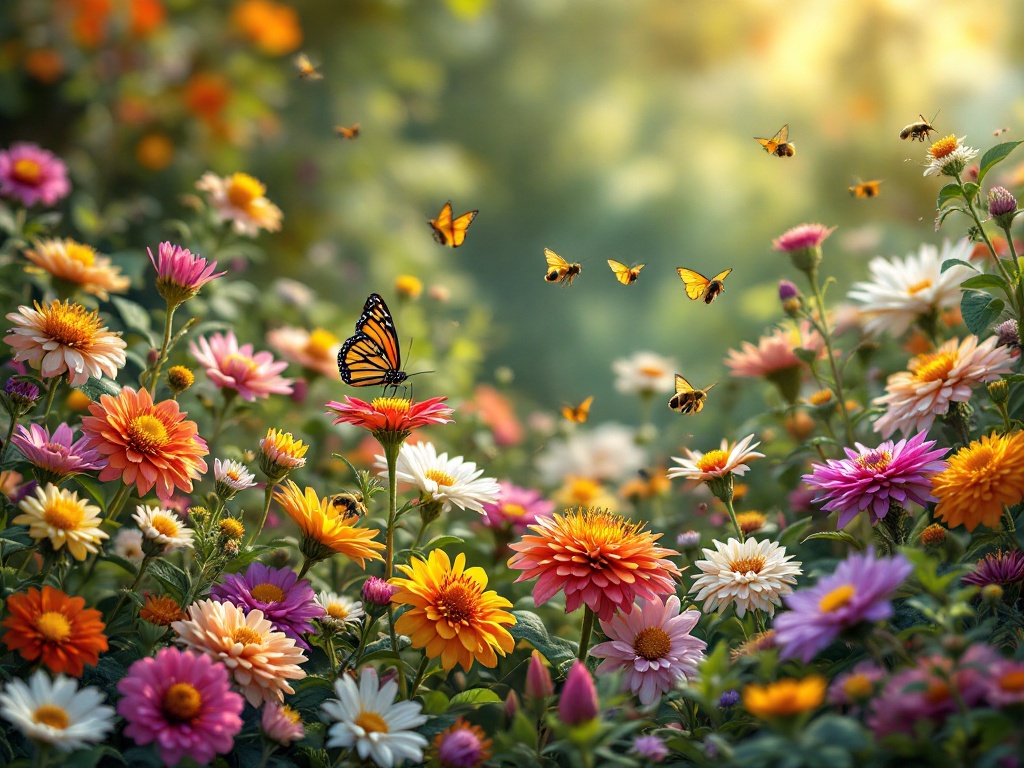
Exotic flowers - names and some impressive examples
The world of exotic flowers is full of surprises and spectacular shapes that fascinate us with their vibrant colors, unique fragrance and incredible adaptability to extreme environments. These flowers transport us to tropical landscapes and show us the amazing diversity of nature. Here are some of the most impressive exotic flowers in the world:
Lady's Slipper Orchid (Cypripedium calceolus)
This rare orchid impresses with its unusual shape, which resembles a delicate slipper. It is native to the temperate and tropical regions of America, Asia and Europe, and is one of the most sought-after orchids for collectors. Its pollination is particularly interesting, as insects are attracted to its goblet-shaped structure and must pass through a natural labyrinth inside the flower to collect and transport the pollen.
Heliconia - Parrot Flower
This vibrant flower, also known as the "parrot flower", originates from the tropical regions of Central and South America. With petals in shades of red, orange and yellow, Heliconia attracts hummingbirds, which play an essential role in its pollination. Its elongated shape and bright colors make this plant one of the most spectacular tropical flowers.
Protea - The royal flower
Native to South Africa, the Protea is one of the oldest and most enduring flowers in the world, with a history dating back over 300 million years. Its large, colorful flowers have an almost alien appearance, and the diversity of species in this family is impressive. The Protea is considered a symbol of change and hope in South Africa and is highly prized in exotic floral arrangements.
Canna indica - Indian lily
This spectacular flower, with petals of deep red or bright yellow, is native to the tropical and subtropical regions of America. Although often confused with lilies, Canna indica belongs to an entirely different family and is cultivated for both its beauty and its edible rhizomes.
Strongylodon macrobotrys - Jade flower
This rare flower, native to the Philippines, amazes with its unique blue-green hue and claw shape. Strongylodon macrobotrys grows as a liana and can reach impressive lengths, its inflorescences can hang in large clusters, offering a unique visual spectacle in nature.
These exotic flowers show us how diverse and spectacular the plant world is. Whether they impress with their size, colors or adaptability, they continue to inspire botanists, collectors and nature lovers around the world.
In conclusion, flowers are much more than mere ornaments in nature or in our homes. They are true treasures of the natural world, fascinating humanity for millennia with their beauty, diversity and vital role in ecosystems.
These interesting plants are not just an aesthetic delight, they play a crucial role in maintaining natural balance and enriching our daily lives. From their role in pollination and maintaining biodiversity, to their positive impact on our mood, flowers are truly remarkable.
The next time you see a flower, stop for a moment and think about the fascinating story behind it. Every petal, every scent, and every color has a role and meaning. Appreciate the beauty and importance of the flowers around you and, if you can, help protect them. Every gesture, no matter how small, counts in preserving these wonders of nature for future generations.
And remember, every flower has a special message. The next time you give flowers, think about their meaning and the joy they will bring to the lives of your loved ones.
References:
-
Hiroko Mochizuki-Kawai, Izumi Matsuda, Satoshi Mochizuki, Viewing a flower image provides automatic recovery effects after psychological stress, Journal of Environmental Psychology, Volume 70, 2020, 101445, ISSN 0272-4944. sciencedirect.com/science/article/pii/S0272494419304001
-
Haviland-Jones, J., Rosario, HH, Wilson, P., & McGuire, TR (2005). An environmental approach to positive emotion: Flowers. Evolutionary Psychology, 3(1), 147470490500300109. journals.sagepub.com/doi/10.1177/147470490500300109
-
Raguso, RA (2008). Wake up and smell the roses: the ecology and evolution of floral scent. Annual Review of Ecology, Evolution, and Systematics, 39, 549-569. annualreviews.org/doi/10.1146/annurev.ecolsys.38.091206.095601
Flower delivery Bucharest with home delivery
Flower delivery Brașov for fresh flowers and fast delivery
